Start Your Free Trial!
Sign up to our newsletter, stay updated on news and exclusive offers from EaseUS. Don't worry, if you change your mind, you can unsubscribe at any time, free of charge. We value your privacy (Privacy Policy).
Page Table of Contents
Why Does My Computer Keep CrashingHOT
10 Effective Ways to Fix Computer Keeps Crashing ProblemHOT
To Wrap Things UpHOT
Additional Information: Tips for Avoiding Computer CrashesHOT
About the Author
Hot Topics
Updated on Mar 28, 2025
Computer keeps crashing are quite annoying to all the users, especially when you are playing games or dealing with important work on your PC or laptop. When the computer crashes, mostly, it shows a blue screen of death, the system cannot be started, the screen freezes with no response, the mouse and keyboard cannot input, and the software operation is abnormally interrupted.
Why does your PC or laptop keep crashing or freezing randomly? In this post, you will find out the reasons your computer crashes and learn the effective fixes for the problem.
| Workable Solutions | Step-by-step Troubleshooting |
|---|---|
| 1. Cool the Computer | It is recommended to open one side panel of the case when using the computer in summer...Full steps |
| 2. Clean the Dust | You need to regularly dust off the hardware in your computer...Full steps |
| 3. Check the Hardware Connection | Vibration during the movement of the computer often causes the internal hardware to loosen...Full steps |
| 4. Check the Hard Disk Bad Sectors | Step 1. Open EaseUS Partition Master. Right-click the disk that you want to check, and then click....Full steps |
Although there are many reasons for the computer crash, the causes will never be separate from hardware and software. The common reasons for computers keep crashing are but are not limited to:
These reasons also lead to "games keep crashing" error. Continue to read and get more solutions.
Solutions to computer keep crashing issue can be divided into two categories: hardware-related fixes and software-related methods. Try the ten fixes below to fix computer crashes caused by hardware or software problems.
The following content is the quick fixes for the computer keeps crashing issue. Share these fixes to help other users facing the same issue.
The motherboard, CPU overheating, and poor heat dissipation will cause a crash. The monitor, power supply, and CPU generate a lot of heat during work, so it is very important to maintain good ventilation. If the monitor is overheated, it will cause color and image distortion and even shorten the life of the monitor.
The heat dissipation of the CPU is an important issue related to the stability of the computer's operation. It is recommended to open one side panel of the case when using the computer in summer to increase the heat dissipation effect. If it is a laptop, it is recommended to use a cooling fan or a cooling pad.
After a long period of use, your computer and laptop hardware can get very dusty. This dust will seriously affect the heat dissipation of the computer. This leads to a decrease in computer performance. For example, if the floppy drive head or the optical drive laser head is contaminated with too much dust, it will cause read and write errors, or even cause the computer to crash. So, you need to regularly dust off the hardware in your computer.
Vibration during the movement of the computer often causes the internal hardware to loosen, such as loosening of the memory bar, resulting in poor contact and causing the computer to crash. Therefore, severe vibration should be avoided when moving the computer.
If your hard disk has bad sectors due to improper use or aging, your computer is prone to crash randomly when it is running. You can use special disk partitioning software - EaseUS Partition Master to check bad sectors.
Too many bad sectors will lead to the inability to read and write files in the corresponding location, and the hard disk will be stuck or dead. Use EaseUS Windows 10 disk management tool to test the bad sectors and find out how good or bad your hard drive is.
Step 1. Open EaseUS Partition Master. Go to Toolkit and select "Bad Sector Scan."
Step 2. Tick "Scan Disk" and choose the target disk from the drop-down menu.
Step 3. Click "Scan" to apply the bad sector scaning process.
Below are other key features that EaseUS Partition Master offers:
If the damage is serious with lots of bad sectors, you can only replace the hard disk. In addition, even if your hard drive is good, but the rest space is too small, the computer will crash during use. You will also need to upgrade your small disk to a larger one.
If you want to switch to another disk, the easiest way is to clone the disk. EaseUS Partition Master helps you to clone your disk with bad sectors to a new HDD or SSD with ease. This ultimate partition manager supports merging partitions, splitting a partition, resize/move partitions, allocat space from D drive to C drive, and so on.
Step 1. Select the source disk.
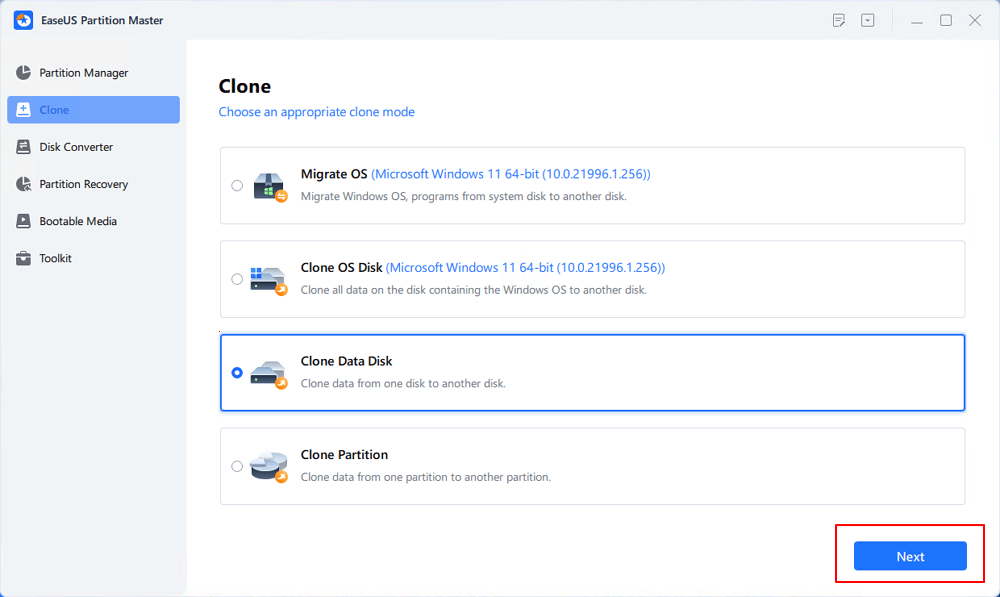
Step 2. Select the target disk.
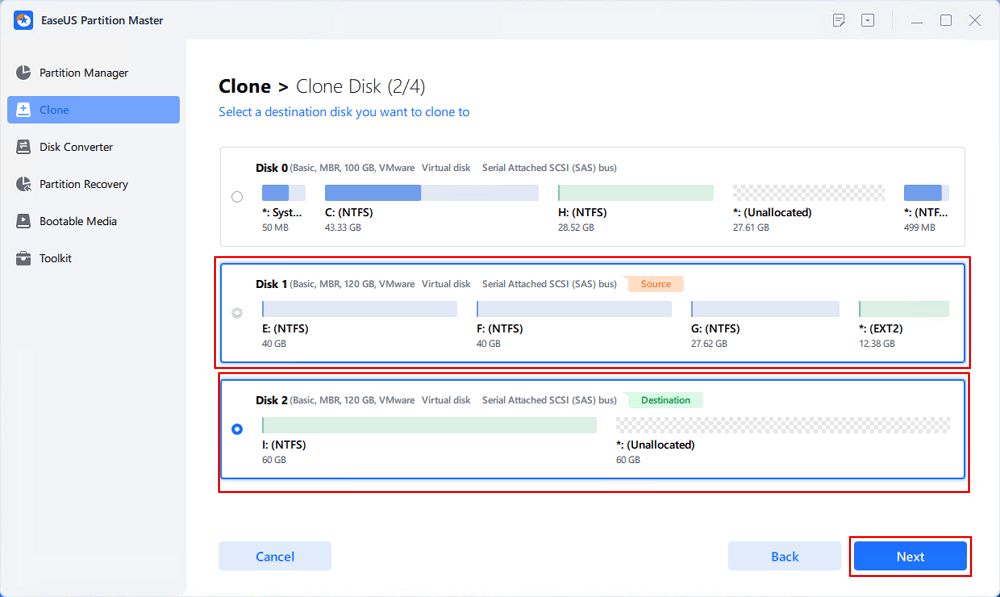
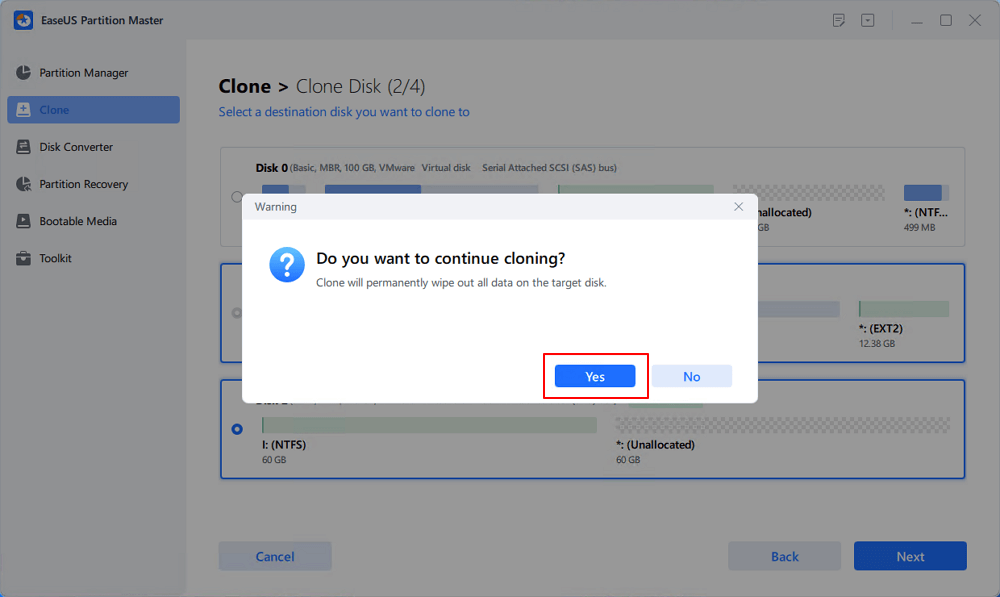
Step 3. Select clone mode.
You can select "Autofit the disk", "Clone as the source" to customize your disk layout.
Step 4. Click "Start" to start cloning process.
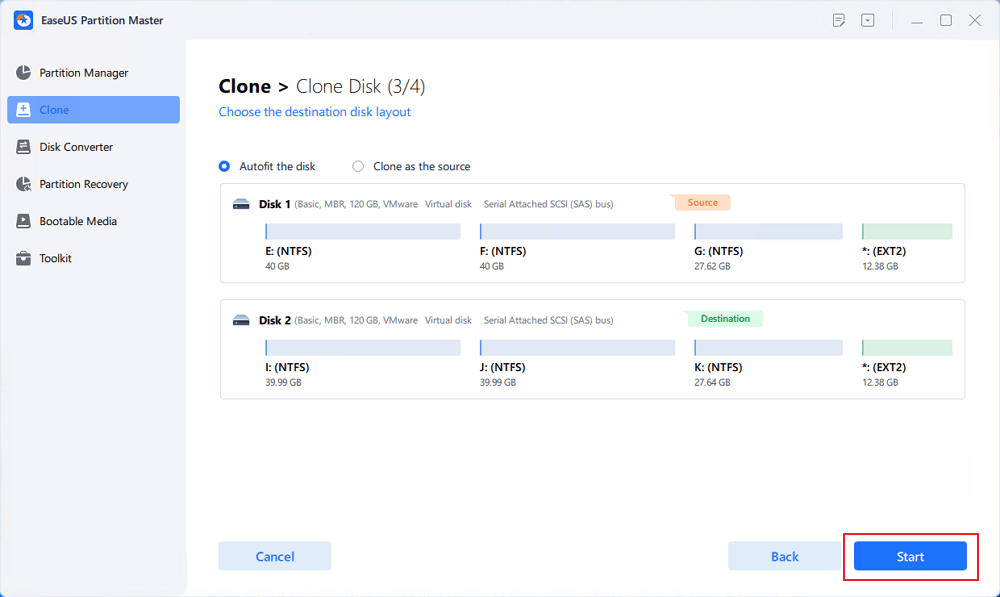
The computer uses RAM (random access memory) to handle tasks, such as playing games, editing photos, and more. If you don't have enough RAM to support the programs you are running, your computer may freeze. You can upgrade your RAM and encounter avoid computer crashes.
If the free space in the system partition is too small, the computer will crash at run time. To solve this problem, you can extend your C drive to speed up your computer, how to do it? Refer to the following steps with the help of power disk management software.
Extend System C drive with unallocated space
The corrupted or outdated drivers might also cause computers to keep crashing or freezing. You can try to reinstall or update your drivers to troubleshoot.
Step 1. Right-click "This PC > Manage > Device Manager".
Step 2. Expand "Disk drives".
Step 3. Right-click your hard disk and click "Update driver".
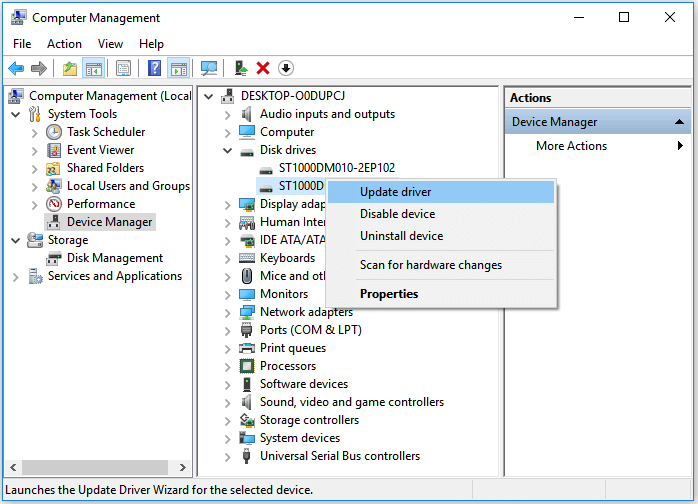
Using your hard drive for a long time can cause a lot of fragmentation. Defragmenting your hard drive can improve performance. In addition, we also recommend that you regularly delete junk or large files from your hard drive. Check how to defragment hard drive partition to prevent computer crashing.
Step 1. Find and right-click the target disk in File Explorer.
Step 2. Select "Properties" > Go to the "Tools" tab and click "Optimize" under the Optimize and defragment drive section.
Step 3. Click "Optimize" to defragment your hard disk.

A virus, malware, or malicious software could cause your computer to crash. You can install reliable security software like Avast, AVG, Avira, Kaspersky, etc. to guard against it. Also, make sure your antivirus software is running regularly and up to date.
After using the computer for a long time, many people have encountered computer crashes unexpectedly. For some people who are not familiar with the computer, computer crashing is very tricky.
This post demonstrates why does your computer keep crashing and how to fix it in nine useful ways. You can follow the guide and try to resolve the problem by yourself. If you have any problems and need further assistance, you can contact our technical support team for advice. Email to: techsupport@easeus.com.
Although the computer crash is inevitable, we can pay attention to the following contents to avoid the problem.
How Can We Help You
Roxanne is one of the main contributors to EaseUS and has created over 200 posts that help users solve multiple issues and failures on digital devices like PCs, Mobile phones, tablets, and Macs. She loves to share ideas with people of the same interests.
Cedric Grantham is a senior editor and data recovery specialist of EaseUS. He mainly writes articles and how-to tips about data recovery on PC and Mac. He has handled 10,000+ data recovery cases and is good at data recovery of NTFS, FAT (FAT32 and ExFAT) file systems, and RAID structure reorganization.
It won't hot image your drives or align them, but since it's coupled with a partition manager, it allows you do perform many tasks at once, instead of just cloning drives. You can move partitions around, resize them, defragment, and more, along with the other tools you'd expect from a cloning tool.
Read MoreI love that the changes you make with EaseUS Partition Master Free aren't immediately applied to the disks. It makes it way easier to play out what will happen after you've made all the changes. I also think the overall look and feel of EaseUS Partition Master Free makes whatever you're doing with your computer's partitions easy.
Read MorePartition Master Free can Resize, Move, Merge, Migrate, and Copy disks or partitions; convert to local, change label, defragment, check and explore partition; and much more. A premium upgrade adds free tech support and the ability to resize dynamic volumes.
Read MoreIt won't hot image your drives or align them, but since it's coupled with a partition manager, it allows you do perform many tasks at once, instead of just cloning drives. You can move partitions around, resize them, defragment, and more, along with the other tools you'd expect from a cloning tool.
Read MoreI love that the changes you make with EaseUS Partition Master Free aren't immediately applied to the disks. It makes it way easier to play out what will happen after you've made all the changes. I also think the overall look and feel of EaseUS Partition Master Free makes whatever you're doing with your computer's partitions easy.
Read MoreRelated Articles
Fix 'We Couldn't Format the Selected Partition [Error: 0x80070057]' Error on Windows 11/10
![]() Tracy King/2025/03/29
Tracy King/2025/03/29
How to Initialize SSD in Windows 10/8/7
![]() Tracy King/2025/03/28
Tracy King/2025/03/28
7 Ways to Check SD Card Health on Mac🔥
![]() Shelly/2025/03/28
Shelly/2025/03/28
How to Format SD Card on Windows 11? Here Are 4 Ways for You in 2025
![]() Tracy King/2025/01/23
Tracy King/2025/01/23
EaseUS Partition Master

Manage partitions and optimize disks efficiently
Your best companion for disk partitioning, MBR to GPT/GPT to MBR conversion,even OS migration
CHOOSE YOUR REGION
Start Your Free Trial!
Sign up to our newsletter, stay updated on news and exclusive offers from EaseUS. Don't worry, if you change your mind, you can unsubscribe at any time, free of charge. We value your privacy (Privacy Policy).
Start Your Free Trial!
Sign up to our newsletter, stay updated on news and exclusive offers from EaseUS. Don't worry, if you change your mind, you can unsubscribe at any time, free of charge. We value your privacy (Privacy Policy).